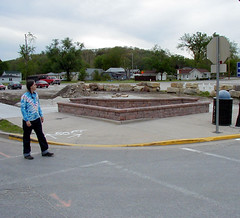Web Page Design Software Review
Web Page Design Software Review
Easy to use html site builders will make it a no-brainer to produce pretty websites. But the content you select and how you display it is the difference between visitors staying longer than 3 seconds or not.. I’ve identified 10 common mistakes made by folks new to designing websites. Use this like a checklist for your own webpage designs:
1. Too Many Ads
Making money from your website is fine, as long as you don’t get too greedy by jamming too many ads everywhere. (Of course, by doing this, you will make less money anyway.) What’s “too many?” Go to your website as a visitor, and have someone else look it over, too. Trust your first impression and compare it to what your friend or family member thought about it. If you do have ads, make sure they’re not too intrusive or obnoxious–like flashing banners, for example.
–~~~~~~~~~~~~–
/>
2. Using Flash Intros; a “Splash Page” with a little movie
Bad idea! Don’t use a Flash intro on your website. Only rarely is it ever done tastefully and appropriately. Even when it is done well, it’s a waste of effort. It’s just too risky and the rewards are NONE. No matter how cool a flash intro may look, it has never, ever proved to increase traffic or website “stickiness.” It almost always has the opposite effect.
3. Plugin Overload
Keep media that uses plugins to a strict maximum of one per page. For example, if you’ve got Flash, then you shouldn’t have a media player, or if you’ve got a little program run by Java then you shouldn’t have Flash as well. Don’t be tempted to plug in stuff on your website just because you think it looks “cool.” Just because you can get free things to put on your site is not a
good reason to use them. (What’s better: To eat free french fries or throw them out and save your health?)
4. Confusing Layout
Many websites seem to make the simplest task take several steps to achieve. Remember that web surfers are in an extremely short attention-span mode and won’t stick around to try to figure out your website.
5. No Clear Website Purpose
It’s easy to get tunnel vision about getting all the little tasks done to your new website and forget the big picture. What I’m talking about here is the need for you to have a main theme/main purpose for your site…One that is completely obvious in the first 3 seconds of someone landing on your homepage.
Think of television commercials that you finally figured out after seeing several times, because it wasn’t clear what the ad was
about…It’s not that you weren’t smart enough to figure out those ads; you simply didn’t put in the mental effort–very slight though it may be–into figuring out the ad the first time. Because watching T.V. commercials is often no different than surfing the internet as far as the mental effort you’re willing to devote to it. But with the internet, your visitors are only going to see your site ONCE–for about 3 seconds before making a decision to stay or leave. If they leave, they’re never coming back, unlike T.V. commercials. So you have to make your message and your site very clear. Slight confusion = Back button or the red “X.”
6. Non-working Links
You’ve have to check all your links regularly to make sure that they all still work. Think of the times you find a site that has links that don’t work: You instantly make some assumptions
about the site, like it’s outdated and unprofessional. It’s the same feeling as seeing simple words misspelled.
7. Strange Fonts
Never get too cute and creative with your website fonts. Stick to the most common web fonts like Verdana, Arial, Times New Roman, and Tahoma. Besides, many of your potential visitors won’t have other fonts installed in their browsers and computers, so all they’ll see is gobbledygook. If you do want to use non-standard fonts, then limit it to graphic header images or logos–where they’re displayed as part of the image.
8. Non-Standard Sized Fonts
It’s important to keep your text around the standard size–like 10, 11, or 12. Making text too big or too small makes it hard to read and is a great way to get your visitors to leave immediately.
9. Weird Page Colors
–~~~~~~~~~~~~–
/>
You’ve seen those webpages that have a dark background with bright-colored or white text. Or sites with very bright or very dark margins, which contrasts with the actual webpage content. All of these puts a strain on the eyes, which makes it hard to read and = Back Button. The tried and true method is to use black text on a white background.
10. Text Running The Width of Monitor
Look at this webpage: http://www.craftown.com/candles.htm and you’ll see an example of how not to use auto-sizing webpages. The idea behind auto-sizing webpages is to use your visitor’s whole desktop area instead of limiting the page to say, 750 pixels wide. This way, on small monitors the webpage looks large enough to read. But the problem comes with larger monitors where the text gets stretched way further than is normal for reading. And nowadays,
most people have larger monitors. The fix? If you do use automatically sizing pages be sure to limit the text to a specific pixel amount. Other than that, don’t bother with it.
If you really want easy to use web design software that also produces stunning, profit-pulling websites, then you’ve gotta check out these website design software reviews now.
Article from articlesbase.com

